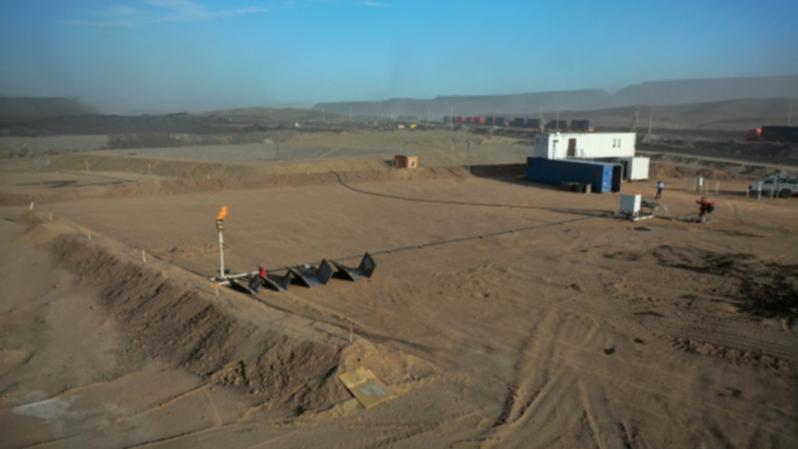
Perth-based TMK Energy has proven its Gurvantes XXXV coal seam gas project in Mongolia can flow gas to surface from all three of its pilot wells, with a sustained flare fed by downhole coals now consistently glowing.
The company is confident its wells have reached “critical desorption pressure” and says it will measure initial flow rates in the coming weeks, ahead of an extended production test to unveil the field’s commercial significance.
Critical desorption pressure is the point at which methane molecules adhered to or adsorbed within the micropores and fractures in the coals, are released to the gaseous phase and can flow to the wellbore and subsequently to the surface.
Desorption pressure is an important parameter in modelling production from coal seam gas projects because it helps determine the pressure range at which gas can be efficiently extracted from the coal reservoir. It also signifies a critical engineering milestone for Gurvantes XXXV, proving the reservoir coals are capable of producing gas in their virgin state without the need for artificial reservoir stimulation.
TMK has been pumping about 600 barrels of water per day from its Lucky Fox-1, 2 and 3 wells for about the past three weeks, reducing downhole pressures and in turn exposing the gas-bearing coal intervals to incrementally higher pressure differentials.
The company says it will continue to pump down the hydrostatic head, brought about by the column of water, in the wells and based on projections and assuming no pump downtime, it forecasts several more weeks before the pressures are reduced to the optimal level. Once that is achieved, it will maintain pump rates in the wells and expects to report an initial combined gas flow rate.
We are well ahead of where we expected to be at this stage of the extended production test, and we now have demonstrated the proof of concept that the coals in the Project area can produce gas to surface via simple, unstimulated, shallow vertical wells. With the three wells now consistently flowing gas at rates sufficient to support a sustained flare, it is with confidence we can say we have reached critical desorption pressures in these wells. This is a fantastic outcome, particularly this early in the extended production test and as we are still in the process of pumping off the hydrostatic head that remains on these wells.
TMK Energy chief executive officer Brendan Stats.Following the initial flow rate being obtained, the wells will enter a six-month extended production testing phase. The company is forecasting an increased gas flow rate during the testing as pumping continues and the pressure sink expands outward from the wells, reaching more of the coal seams in the field and subsequently releasing more gas.
The data from the extended production test is critical to enable TMK to model gas delivery rates and create a production profile, giving rise to commercial estimates for Gurvantes XXXV and feeding TMK’s prefeasibility study for the project, which has an estimated best-estimate (2C) contingent resource of 1.2 trillion cubic feet of high-methane gas.
As the extended production test matures in the coming weeks and steady gas flow at surface is achieved, the company will have a clear and immediate pathway to commercialisation through an energy offtake agreement, signed in March this year with coal miner, Mongol Alt LLC (MAK).
As part of the deal, the produced gas will be used for modular power generation at site before being on-sold to MAK at the prevailing local energy wholesale price. Prior to gas production, the combined 600 barrels of produced water per day was being piped to a nearby MAK coal mine.
The Gurvantes XXXV project is operated by TMK with a 67 per cent interest as part of a joint venture with Perth-based partner Talon Energy, which has the remaining 33 per cent. The partnership has moved quickly since discovery earlier this year when gassy coal intervals up to 68m thick were struck with each of the three Lucky Fox wells.
Late last month, the company achieved its first gas to surface and now with desorption achieved and the project’s proof of concept in the bag, the market can look forward to finding out just how much gas the Mongolian coals are willing to give up.
Chinese gas buyers may also be interested, with that country’s border less than 20km south of Gurvantes XXXV and its huge west-east gas pipeline just another 280km across the border.
Mordor Intelligence estimates the compound annual growth rate for China’s LNG market at about 7 per cent from this year to 2028, in part due to the phasing out of coal-fired power in a step towards reduced carbon emissions. Watch this space…